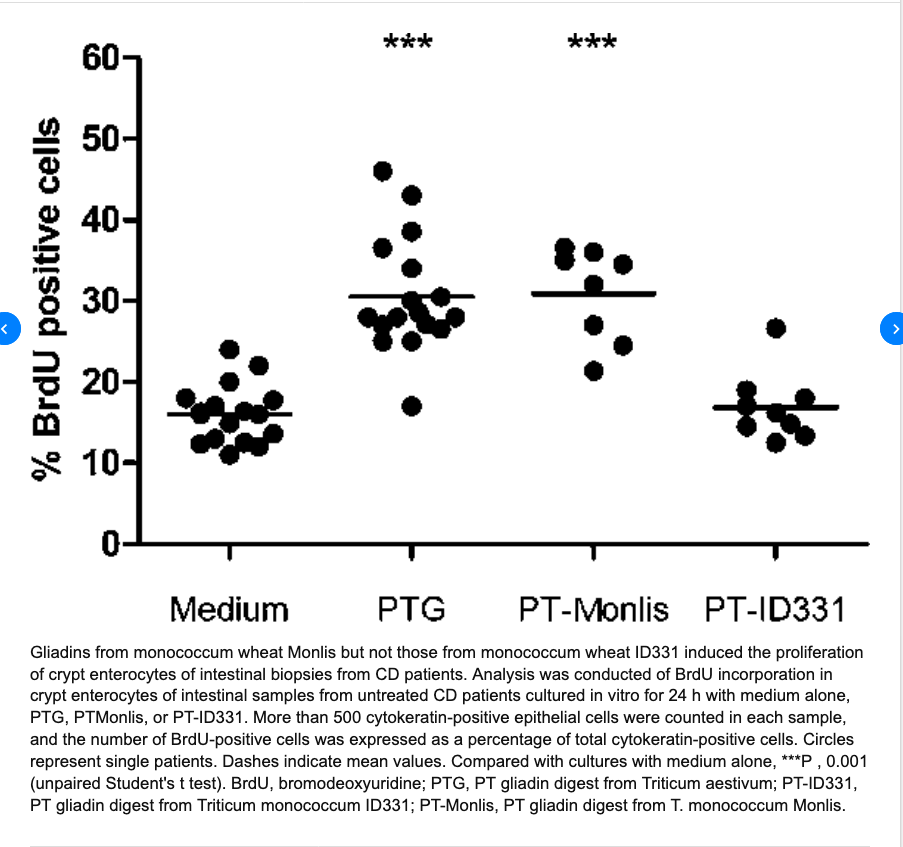La ricerca che presentiamo è un ottimo compendio delle attuali conoscenze sulla sensibilità al glutine non celiaca
“Riassunto: il grano è un alimento base importante a livello globale e fornisce un contributo significativo all’apporto giornaliero di energia, fibre e micronutrienti. Il consumo di più cereali integrali, tra cui il grano, contribuisce a ridurre il rischio del diabete, delle malattie cardiovascolari e del cancro del colon. Tuttavia, i componenti specifici del grano possono anche provocare reazioni fisiche avverse in soggetti sensibili come la celiachia (CD) e l’allergia al grano (WA). Recentemente i media hanno evidenziato una stretta correlazione tra consumo di grano ed effetti negativi sulla salute. Ciò ha motivato molti consumatori a evitare o ridurre il consumo di alimenti che contengono grano / glutine, nonostante l’assenza di CD o WA diagnosticati, sollevando domande sui meccanismi sottostanti e sui possibili effetti di nocebo. Tuttavia, studi recenti hanno dimostrato che alcuni soggetti possono soffrire di reazioni avverse in assenza di CD e WA. Questa condizione è chiamata sensibilità al glutine non celiaca (NCGS) o sensibilità al grano non celiaca (NCWS). Oltre al glutine, il grano e i prodotti derivati contengono molti altri componenti che possono scatenare sintomi, tra cui inibitori dell’α-amilasi e tripsina (ATI), lectine e carboidrati a fermentazione rapida (FODMAP). Inoltre, il modo in cui vengono elaborati gli alimenti, come l’uso di lievito o la fermentazione a lievito naturale, i tempi di fermentazione e le condizioni di cottura, possono influenzare la presenza e la bioattività di questi componenti. La presente recensione descrive sistematicamente le caratteristiche delle intolleranze legate al grano, tra cui l’eziologia, la prevalenza, i componenti responsabili, la diagnosi e le strategie per ridurre le reazioni avverse.
Extract from the study:
Non-Celiac Gluten/Wheat Sensitivity
During recent years a third group of people has been classified who experience symptoms after eating wheat products, but have been diagnosed not to suffer from either WA or CD. Mostly these individuals are self diagnosed wheat intolerant/sensitive. In these individuals, irritable bowel syndrome (IBS)-like gastrointestinal symptoms and extra-intestinal complaints occur, which improve on a gluten-free diet. This group of patients is referred to as “non-celiac gluten sensitivity” (NCGS), or the more recently, “non-celiac wheat sensitivity” (NCWS). Di Sabatino emphasizes that NCWS is not a homogeneous disease syndrome (such as CD and WA), but rather a heterogeneous syndrome (Di Sabatino & Corazza, 2012). It is probable that the underlying causes and mechanisms are not the same for all people with NCWS and that reactions may be caused by different components of wheat or grain (products) and involving different host factors. Ludvigsson et al. (2013) defined NCGS as follows: one or more of a variety of immunological, morphological, or symptomatic manifestations that are precipitated by the ingestion of gluten in individuals in whom CD has been excluded. However, despite the word “gluten” in the currently most cited definition “NCGS,” it is far from certain that the gluten is the (main) cause of the symptoms observed. The more recent term “NCWS” was adopted since it was noted that gluten (NCGS) may not be the real cause (Biesiekierski, Peters, et al., 2013; Skodje et al., 2018). For that reason, we will use the term NCWS as most appropriate in the remainder of this article.

